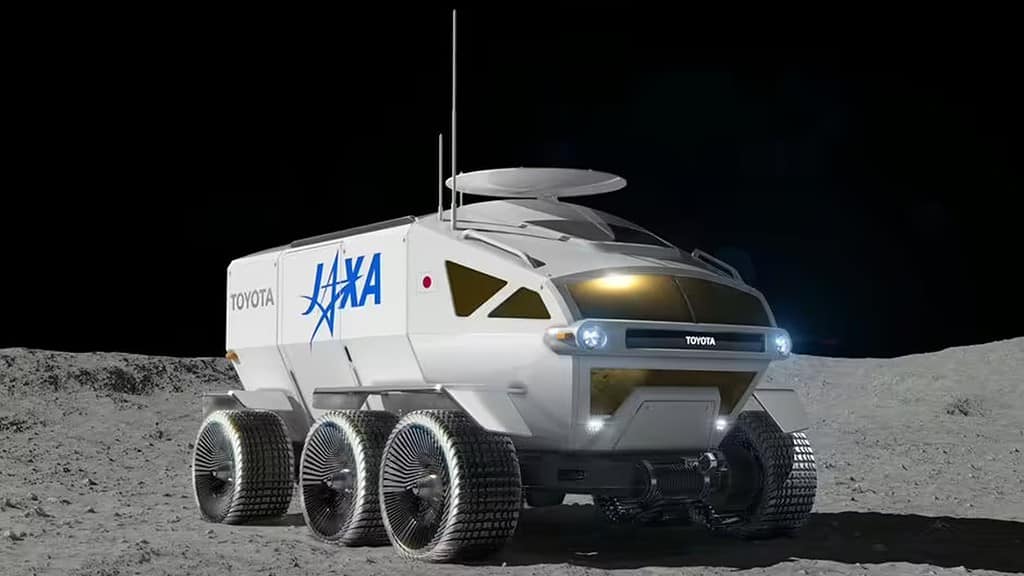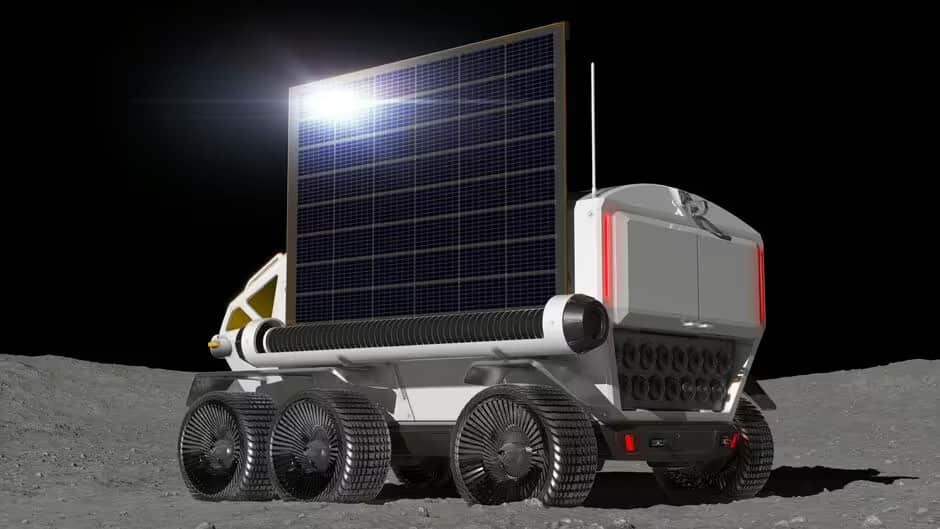
When NASA returns to the Moon, its astronauts will have a unique vehicle at their disposal—a pressurized vehicle in which astronauts will be able to live and perform experiments for weeks on end.
The lunar vehicle looks mighty similar to a trusty camper van. That’s fitting because it sounds like it has a lot of the same amenities. One of its strongest points is that it can be operated without having to wear a spacesuit as the environment inside is completely controlled for optimal temperature and air conditions. Astronauts will be able to travel on the lunar surface farther than ever before and conduct experiments in absolute comfort. It’s a good middle ground or stepping stone toward a permanent outpost, which is the ultimate destination for these missions.
The vehicle was designed by Japan’s Aerospace Exploration Agency (JAXA) and automotive giant Toyota. It’s called the “Lunar Cruiser” after Toyota’s famous Land Cruiser. Japan will fund all the development and handle operations. In return, NASA will launch and deliver the rover to the Moon and offer two Japanese astronauts the opportunity to participate in an Artemis mission. On April 10, NASA signed an agreement with JAXA that formalized the deal.
“America no longer will walk on the Moon alone. With this new rover, we will uncover groundbreaking discoveries on the lunar surface that will benefit humanity and inspire the Artemis Generation,” said NASA Administrator Bill Nelson.
The Moon Camper
The lunar camper van is designed for a two-person crew. Unlike the smaller, open off-road vehicles also being developed for lunar exploration, which require astronauts to wear spacesuits, this new vehicle offers a habitat where occupants can move freely in normal clothing.

Measuring 6.0 x 5.2 x 3.8 meters, the vehicle is powered by a hydrogen fuel cell system, with solar panels to supplement its energy needs. These solar panels will also power a system that recycles wastewater, converting it into hydrogen and oxygen, which can then be reused by the fuel cells to generate power. This feature enhances the vehicle’s sustainability, significantly extending its operational range to a staggering 10,000 kilometers (6,000 miles).
“It is a mobile habitat, it’s a lunar lab, a lunar home and a lunar explorer. It’s a place where astronauts can live, work and navigate the lunar surface, leading to magnificent discoveries for all of us,” Nelson said in a press conference.
This autonomy will be crucial for extensive lunar exploration, especially in the target region at the lunar south pole where NASA hopes to find water in the dark craters. The rover has a designated operational lifespan of 10 years.
The vehicle will arrive on the Moon as part of NASA’s Artemis VII mission in 2031. The next mission is Artemis II, slated for September 2025 when a four-person crew will orbit the Moon. Artemis III is supposed to put the first boots on the Moon after a more than 50-year pause sometime in late 2026.









